Summary of the day: The conflict in Ukraine continues with notable developments on multiple fronts. Western media reports suggest the US is restricting the UK from allowing Ukraine to use Storm Shadow missiles for strikes within Russia, potentially limiting Ukraine’s offensive capabilities. Meanwhile, Ukrainian forces have slowed their attacks in Kursk Oblast and are attempting to consolidate their recent gains, according to Russian military bloggers. Ukraine has also conducted drone strikes against oil infrastructure in several Russian oblasts, demonstrating their ability to strike deep within Russian territory. On the ground, Ukrainian forces have regained positions in the Siversk direction, while Russian forces have made advancements in various areas including southeast of Kupyansk and northeast of Vuhledar. In response to the evolving nature of warfare, the Russian Ministry of Defense is reportedly supporting the creation of specialized combat units focused on drone and electronic warfare in occupied Zaporizhia Oblast.
Picture of the day:
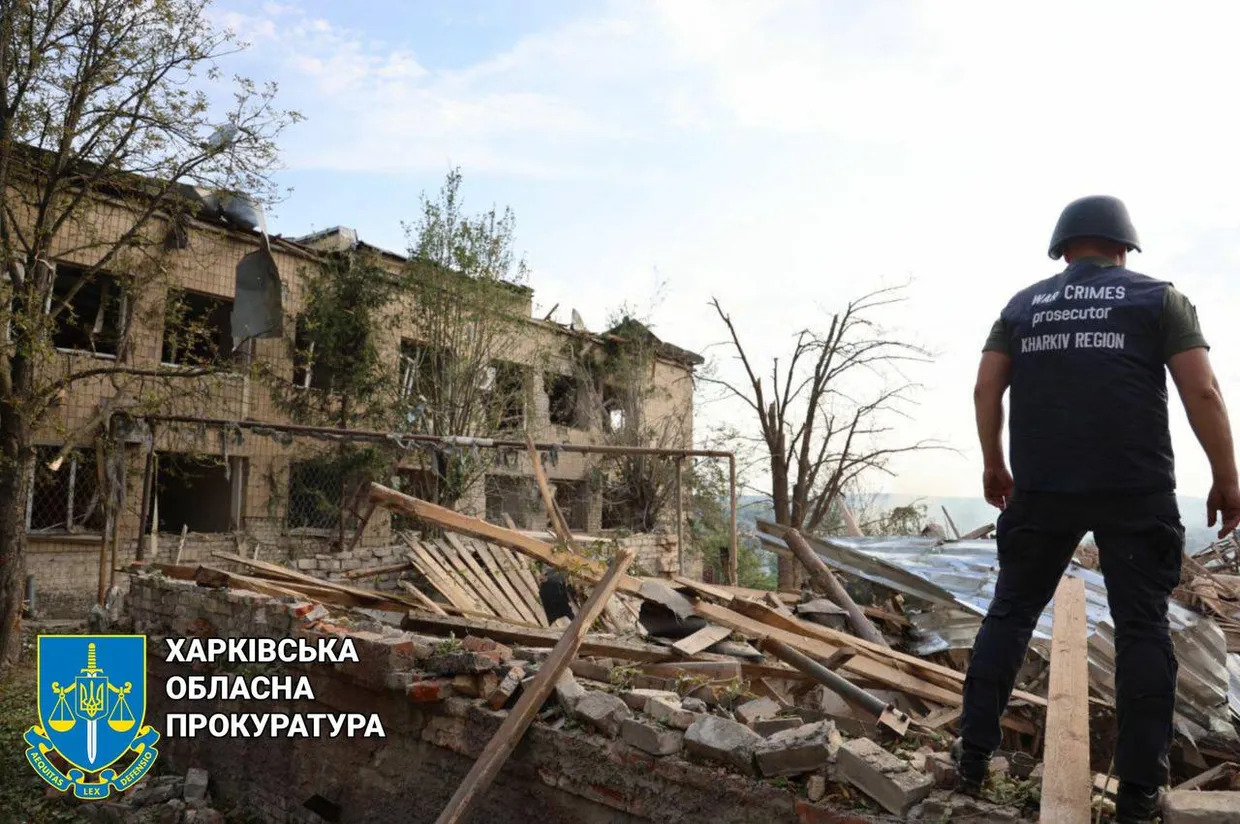 The aftermath of a Russian attack on the town of Kupiansk in Kharkiv Oblast. (Kharkiv Oblast Prosecutor’s Office)
The aftermath of a Russian attack on the town of Kupiansk in Kharkiv Oblast. (Kharkiv Oblast Prosecutor’s Office)
What Can I Do To Help Ukraine? This is a question I receive all the time. We at Transform Ukraine are building longer-term housing for internally displaced Ukrainians. Visit Rebuild Ukraine for how you can assist in housing a Ukrainian family displaced by the war.
Beyond Ukraine – The March Towards World War
Russian officials, including President Putin and Foreign Minister Lavrov, have recently made statements about reviewing Russia’s nuclear doctrine. Ukraine’s Kharkiv Group of Forces believes these claims are intended to intimidate Western nations, aiming to limit Ukraine’s ability to strike military targets in Russia using Western-supplied weapons.
Situation On The Land, Sea, and Air in Ukraine
Ukrainian forces successfully shot down two Russian fighter aircraft in the Donetsk region. A Su-25 was downed near Kramatorsk by Ukrainian forces using MANPADS missiles. The Su-25, a Soviet-era ground-attack aircraft, caught fire and crashed after being hit. Additionally, a Su-35 fighter jet was reportedly shot down near Ozaryanivka, southeast of Chasiv Yar, also using MANPADS. For the Su-35 incident, a Ukrainian brigade representative stated they cannot confirm the status of the Russian crew or assess the damage, as the aircraft fell in Russian-occupied territory.
A Russian military blogger reported that Russian forces are trying to overcome Ukrainian electronic warfare by flying drones at higher altitudes. The blogger shared footage of a Russian drone operator flying a drone at about 107-108 meters high before rapidly descending to strike a Ukrainian artillery system. This tactic is reportedly an attempt to bypass Ukrainian electronic interference, allowing the drones to evade detection and successfully hit their targets.
Russian military bloggers expressed worry about Ukraine’s use of first-person view (FPV) drones to target Russian reconnaissance drones. They fear this tactic could significantly hamper Russia’s ability to gather intelligence and conduct strikes in Ukraine.
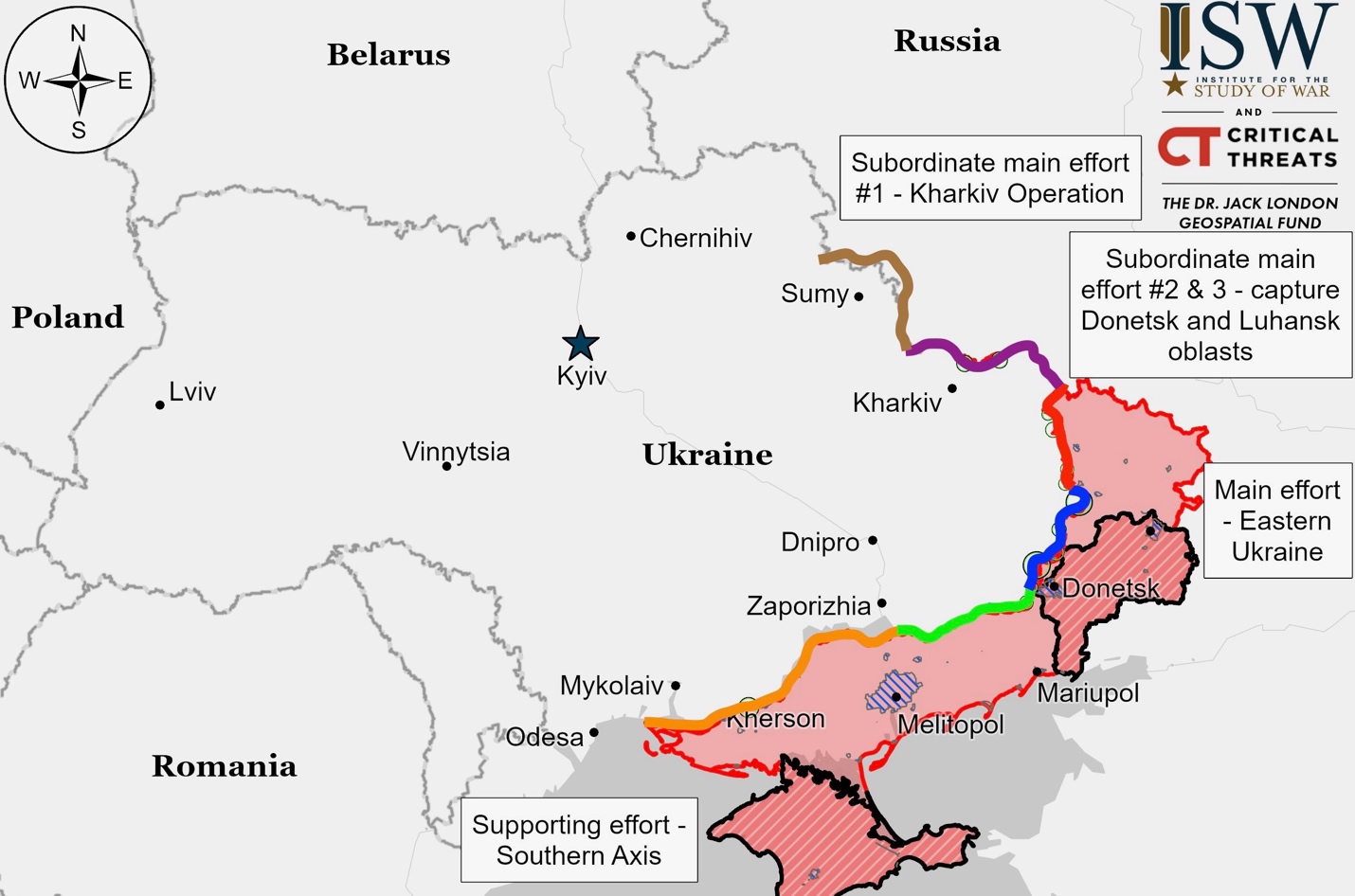
Kursk Front – Initiative Ukraine
Russian military bloggers report that Ukrainian attacks in Kursk Oblast have slowed down, with Ukrainian forces now fortifying recently seized areas. Russian forces claim to have regained some positions, including in eastern Korenevo and Spalnoye. Ukrainian advances were reported near Vetreno, Kremyanskoye, Sheptukhovka, Nechayev, and Cherkasskoye Porechnoye. Additional Ukrainian attacks were reported near Olgovka, Malaya Loknya, Russkaya Konopelka, and Borki. Russian forces also claim to have repelled a Ukrainian attempt to cross the border near Zhuravlevka in Belgorod Oblast.
Kharkiv Front – Initiative Russia
Russian forces continued offensive operations in northern Kharkiv Oblast with no confirmed frontline changes. They attacked near Lyptsi, Hlyboke, and Vovchansk. Ukrainian forces reported Russian troop movements and preparations for assaults in these areas. A Ukrainian spokesperson noted decreased intensity of Russian attacks in the Kharkiv direction, attributing it to the Ukrainian incursion in Kursk Oblast. Russian forces reportedly have limited armored vehicles and are conducting assaults mostly on foot or with light vehicles.
Luhansk Front – Initiative Russia
Russian forces have made recent advances near Kupyansk, continuing their offensive along the Kupyansk-Svatove-Kreminna line. They’ve advanced northwest of Pishchane, southeast of Kupyansk. Attacks continue in several areas, including Synkivka, Stelmakhivka, Stepova Novoselivka, Kolisynkivka, Kruhlyakivka, Druzhelyubivka, Novosadove, Nevske, Makiivka, and Terny. These operations indicate ongoing Russian efforts to push their position in this region.
Donetsk Front – Initiative Russia
Siversk
Ukrainian forces recaptured positions southwest of Ivano-Darivka, near Siversk. Russian forces continued attacks in the area, targeting Verkhnokamyanske, Vyimka, Ivano-Darivka, and Spirne. A Russian commander revealed their tactics involve initial artillery and drone strikes, followed by small infantry group attacks.
Chasiv Yar
Russian forces continued attacks near Chasiv Yar, but no confirmed advances were reported. Despite Russian claims of progress west of Andriivka and Kurdyumivka, attacks were noted in eastern Chasiv Yar and nearby areas including Hryhorivka, Ivanivske, Klishchiivka, Andriivka, and Bila Hora.
Toretsk
Russian forces have made a small advance in eastern Toretsk, progressing along 91 Dyvizyi Street. They continue to attack Toretsk and nearby areas including Druzhba, Pivnichne, Niu York, and Nelipivka. This indicates ongoing Russian efforts to push their position in the Toretsk area.
Pokrovsk
Russian forces are making significant advances in eastern Ukraine’s Donbas region, particularly southeast of Pokrovsk. They have captured the town of Novohrodivka and gained ground in other areas, including Memryk, Krasnyi Yar, Hrodivka, and potentially reaching the outskirts of Myrnohrad and Selydove. Ukrainian troops, facing a 4-to-1 firepower disadvantage, have been pushed back in several locations. President Zelensky acknowledged the intense Russian attacks and promised reinforcements. The Ukrainian General Staff reported numerous Russian assaults in the area, while some analysts describe the situation around Pokrovsk as “catastrophic” due to insufficient Ukrainian fortifications. Russian forces are reportedly concentrating 50,000 to 60,000 troops for their Donbas offensive, with about one-third of all combat engagements along the entire front occurring in this sector. Ukrainian military leaders characterize the situation as “extremely difficult.”
Ukrainian President Volodymyr Zelensky reported ongoing Russian pressure in the Pokrovsk sector of Donetsk region, comparing it to the battle for Bakhmut. He suggested Russian forces could suffer up to 60,000 casualties in this area. Zelensky noted that Russian troops are not retreating due to threats from their own side.
The Donetsk Oblast town of Pokrovsk, with 38,000 residents including 1,900 children, faces imminent danger as Russian forces approach. Governor Vadym Filashkin described the situation as “dangerous and very difficult.” Pokrovsk, a crucial logistical hub for Ukrainian forces, has become Russia’s main target in the region. The military administration urged immediate evacuation on August 15, with Russian forces reportedly 10 kilometers from the town. Banks in Pokrovsk will close by September 2, with only ATMs remaining operational, signaling the urgency of the situation.
West of Donetsk City
Russian forces launched attacks west of Donetsk City focusing on Krasnohorivka and Heorhiivka. However, the Ukrainian General Staff reported no confirmed Russian advances in these areas.
Southwest of Donetsk City
Russian forces have made progress near Vuhledar, southwest of Donetsk City. They reportedly captured Kostyantynivka, although some sources suggest the area may still be contested. Russian troops have also crossed key roads near Vuhledar, potentially cutting off important supply routes. The Ukrainian General Staff reported Russian attacks in several settlements around Vuhledar, including Kostyantynivka, Vodyane, and Prechystivka.
Zaporizhia Front – Initiative None
Zaporizhia-Donetsk Border Area
There were no reports of offensive operations by either Russian or Ukrainian forces in the area.
Zaporizhia Line
Fighting continues in western Zaporizhia Oblast, particularly around Robotyne, Novodanylivka, and Mala Tokmachka. Russian forces are reportedly using drones in this area.
Kherson (Dnipro River) Front – Initiative None
Ongoing positional engagements were reported in the Kherson direction. No significant changes or major offensives were mentioned.
Ukraine News
Russian forces launched limited missile attacks on Ukraine overnight. They struck Izyum in Kharkiv Oblast with two Kh-59 cruise missiles. On the morning, they also attacked Kryvyi Rih in Dnipropetrovsk Oblast, injuring nine civilians. These strikes represent continued Russian long-range attacks on Ukrainian targets.
The director of Ukrhydroenergo, Ihor Syrota, confirmed that the Kyiv dam is not at risk of breaching following a recent Russian attack on the Kyiv Hydroelectric Power Plant. While debris removal is ongoing, the full extent of damage is still being assessed. Syrota noted that all Ukrhydroenergo stations have been attacked by Russia, with the Kakhovka plant “completely lost” and the Dnipro station barely operational. Russia has consistently targeted Ukraine’s energy infrastructure, including recent attacks that have led to new energy consumption restrictions. Despite ongoing attacks, Ukrhydroenergo is working to restore its infrastructure.
Ukraine has successfully negotiated a restructuring of over $20 billion in international bonds, providing crucial debt relief. Finance Minister Serhii Marchenko announced that bondholders agreed to a 37% nominal loss, postponing maturity and lowering interest rates. This deal is expected to save Ukraine $11.4 billion over the next three years and $22.75 billion by 2033. The agreement, which includes Ukravtodor’s Eurobonds, saw participation rates between 95% and 98.87% for each bond series. This restructuring is vital for Ukraine to maintain budget stability for defense, healthcare, education, and social services while avoiding potential default. The settlement is expected to occur on August 30, with euro-denominated bonds exchanged for new dollar-denominated Eurobonds.
Innocent Victims Of War
The casualty count of civilians in the past 24 hours: (Russian War Crimes)
DEATHS: 11 INJURIES: 59
- Russian attacks on Kharkiv Oblast resulted in one death and 14 injuries. In Bohodukhiv, a strike on an infrastructure facility killed a 72-year-old man and injured six people, with two others suffering shock. Later, in Izium, a rocket attack damaged houses and a bakery, injuring five people and causing shock to seven others, including four children. Additional attacks on the villages of Tsyrkuny, Kozacha Lopan, and Piatyhirske injured three more civilians.
- Russian forces dropped a guided aerial bomb on Kupiansk, Kharkiv Oblast, injuring at least 14 people, including three policemen. The attack damaged the city administration building, a hotel, homes, cars, and shops.
- Russian forces launched a missile attack on Kryvyi Rih in Dnipropetrovsk Oblast injuring at least nine people. Four men were hospitalized with various injuries, while others received medical attention on-site or did not require hospitalization. The attack damaged a garage cooperative building, affecting over 230 cars. Additionally, nearby structures including a hotel, service station, administrative buildings, and a vocational school sustained damage, primarily to windows.
- Russian attacks on Donetsk Oblast resulted in injuries to three people. Two individuals were wounded in Selydove, while one person was injured in Kostiantynivka.
- Russian forces dropped an aerial bomb on the village of Izmailivka in Donetsk Oblast, Ukraine. The attack killed a family of four, including parents aged 45 and 53, their 24-year-old daughter, and 17-year-old son. The victims were found dead under the rubble of their destroyed house. Prosecutors believe Russian forces deliberately targeted the residential area, likely using a guided bomb.
- Russian attacks in the Marhanets community of Nikopol district, Dnipropetrovsk Oblast, resulted in the death of a 70-year-old man.
- Russian forces launched attacks on Kherson Oblast in Ukraine, resulting in two deaths and 14 injuries.
- A drone attack on the Krasnopillia community in Sumy Oblast, Ukraine, resulted in one civilian injury.
- A Russian drone attack on Zaporizhzhia City resulted in three deaths and four injuries. Two elderly women, aged 83 and 86, and a 61-year-old man were killed. The injured include three women aged 19, 30, and 56, as well as a 59-year-old man.
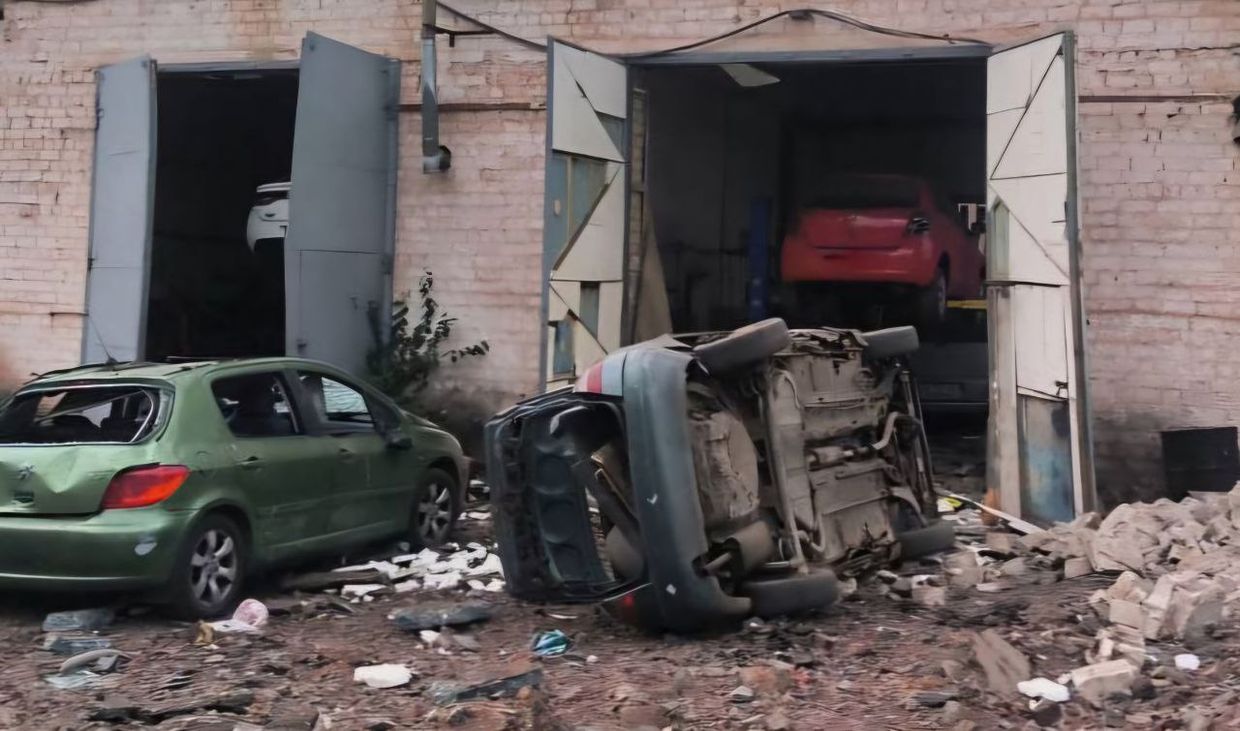 The aftermath of a Russian missile attack against Kryvyi Rih, Dnipropetrovsk Oblast, Ukraine. (Governor Serhii Lysak/Telegram)
The aftermath of a Russian missile attack against Kryvyi Rih, Dnipropetrovsk Oblast, Ukraine. (Governor Serhii Lysak/Telegram)
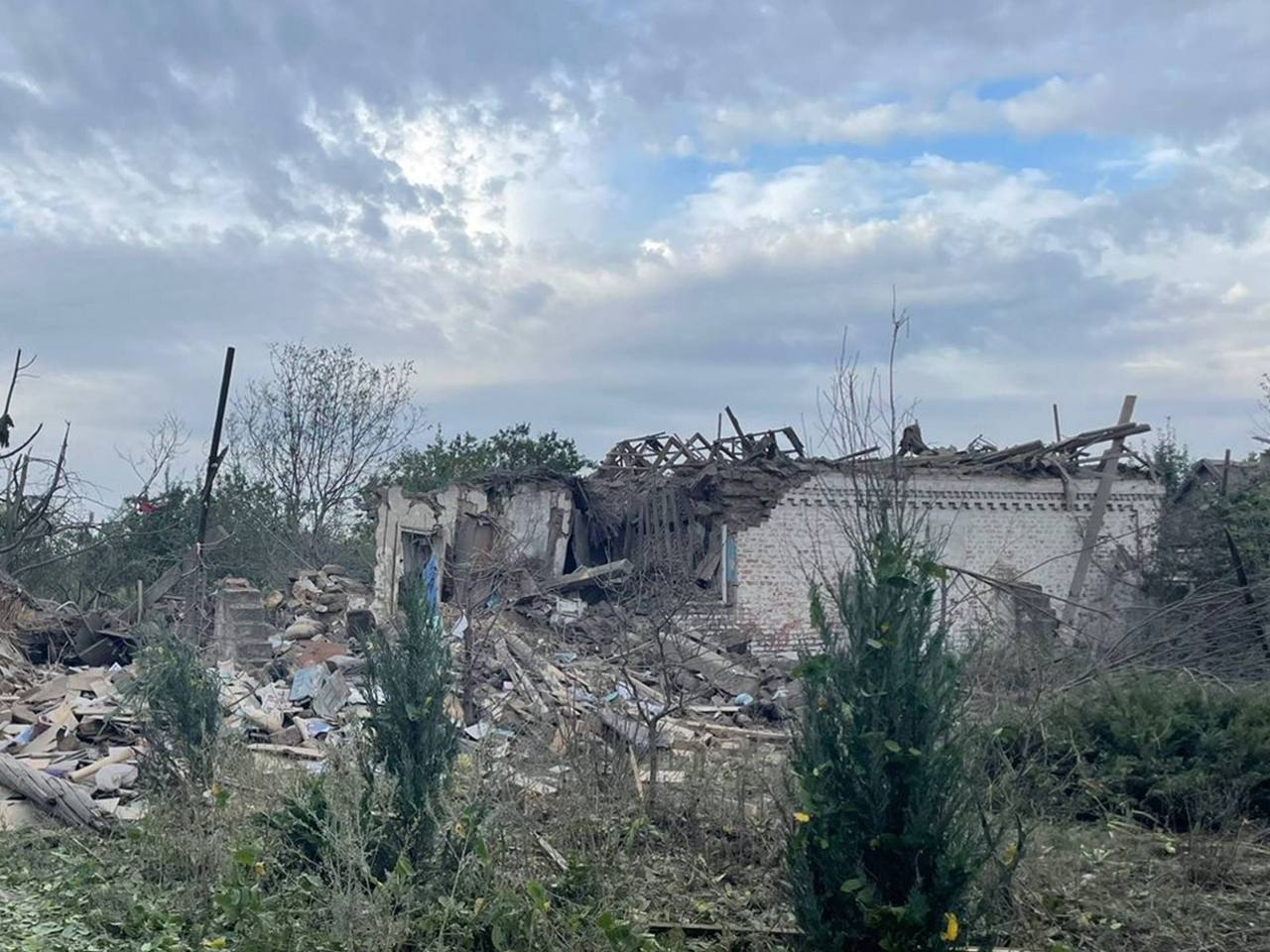 A house destroyed following a Russian airstrike against Izmailivka, Donetsk Oblast, Ukraine, killing a family of four. (Donetsk Oblast Prosecutor’s Office/Telegram)
A house destroyed following a Russian airstrike against Izmailivka, Donetsk Oblast, Ukraine, killing a family of four. (Donetsk Oblast Prosecutor’s Office/Telegram)
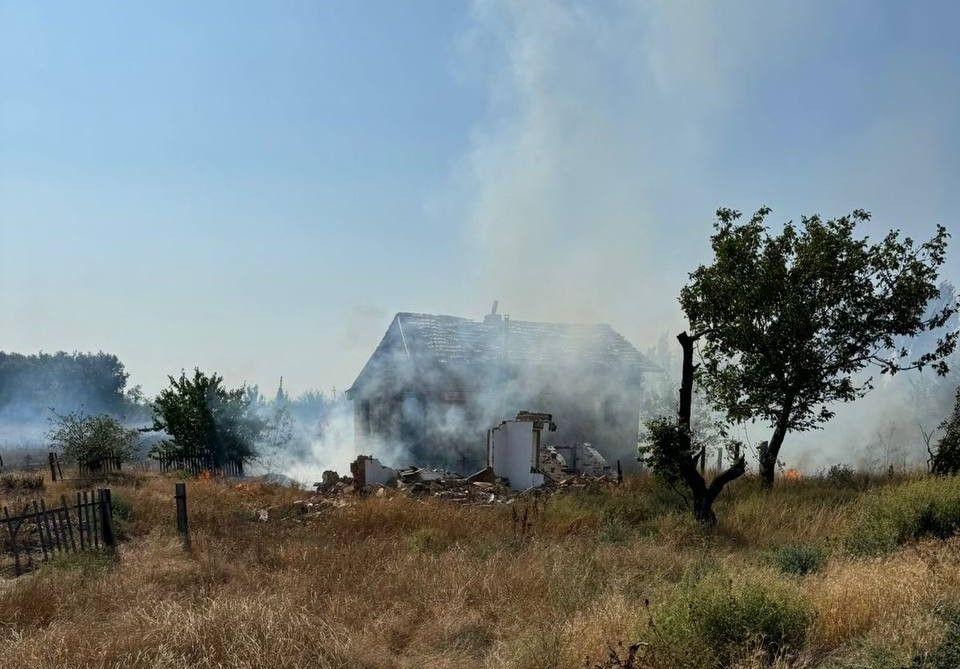 A house destroyed during Russian attacks against Zaporizhzhia Oblast. (Governor Ivan Fedorov/Telegram)
A house destroyed during Russian attacks against Zaporizhzhia Oblast. (Governor Ivan Fedorov/Telegram)
Ukraine’s Allies
NATO members condemned recent Russian attacks on Ukraine and reaffirmed support for Ukraine’s defense during a NATO-Ukraine Council meeting. NATO Secretary General Jens Stoltenberg emphasized the need for increased support to maintain Ukraine’s defenses. Ukraine’s Defense Minister Rustem Umerov briefed NATO on the situation and capability needs. The EU’s Josep Borrell urged lifting restrictions on Ukraine’s use of Western long-range weapons against Russian military targets, a contentious issue as Western partners fear escalation. This comes amid Ukraine’s recent Kursk incursion and ongoing pressure to remove long-range weapon restrictions.
Reports suggest the U.S. is prohibiting the UK from allowing Ukraine to use Storm Shadow missiles against targets in Russia, due to concerns about escalation and the missiles’ reliance on American intelligence systems. The UK government supports Ukraine’s ability to use these missiles but requires U.S. permission due to classified American components. There’s confusion about the UK’s official stance, with conflicting reports on whether Britain has sought U.S. permission. The decision involves multiple countries, likely including France, which produces a variant of the missile called SCALP/T.
Lithuania delivered a new military aid package to Ukraine, including loaders, anti-drone systems, and folding beds. This follows earlier shipments of 155-mm ammunition, armored personnel carriers, winter gear, and other equipment. Prime Minister Ingrida Simonyte announced that Lithuania will meet or exceed its commitment to spend 0.25% of its GDP on aid to Ukraine by the end of 2024, urging other allies to match this target.
Russia News
Ukrainian forces launched drone strikes on Russian oil infrastructure in Rostov, Kirov, and Voronezh oblasts, targeting facilities that supply Russian military forces. Ukrainian military intelligence confirmed hitting the FDKU Atlas oil facility near Kamensk-Shakhtinsky in Rostov Oblast, causing ongoing fires at multiple oil tanks. This facility, about 15 kilometers from occupied Luhansk Oblast, reportedly supplies petroleum products to Russian armed forces. In Kirov Oblast, drones struck the “Zenit” oil depot near Kotelnich, 1,500 km from Ukraine’s border, marking the first such attack in that region. Russia claimed to have shot down drones in Voronezh Oblast as well. These attacks, including a previous strike on an oil depot in Proletarsk on August 18, are part of Ukraine’s ongoing strategy to weaken Russia’s petroleum sector and disrupt military supplies.
Russia’s Kazan International Airport suspended flights due to drone threats. Planes were redirected to Samara. This follows similar incidents in April and June. Kazan, located in Tatarstan over 900 km east of Ukraine, has been a target of Ukrainian drone strikes before.
The Russian Federal Security Service (FSB) reported that it prevented a terrorist attack in the Republic of Ingushetia. Six residents were detained for allegedly planning attacks on law enforcement officers and a Russian Orthodox church in Sunzha. The FSB claims one suspect received orders from a militant in Syria. Three detainees face charges of participating in a terrorist organization and planning a terrorist act, while the other three are charged with illegal possession of explosives. The accuracy of the FSB’s claims cannot be independently verified.
Reports indicate that Russia’s economic ties with allies are facing increasing restrictions due to concerns about U.S. secondary sanctions. In August 2024, UAE banks began blocking Russian company payments for Chinese electronic components and consumer goods. This affects trade routes between Russia and China, where the UAE previously acted as a payment intermediary. Similarly, at least 12 Kyrgyz commercial banks have suspended personal money transfers through Russian banks indefinitely. These actions follow new U.S. sanctions issued on August 23 against Russian and Chinese entities accused of supporting Russia’s war efforts in Ukraine. The restrictions reportedly came at China’s request and affect transactions for products not directly shipped to the UAE. This trend may continue as more foreign banks seek to avoid secondary sanction risks. The UAE, a key conduit for sanctioned goods to Russia, is facing Western pressure to curb these activities. Despite these challenges, China remains Russia’s primary economic partner, with trade between the two countries surging by 121% since 2021.
Telegram CEO Pavel Durov was arrested at Le Bourget airport near Paris on August 24, 2024, and released after four days in custody. He faces 12 charges, including crimes related to child pornography, drug trafficking, and money laundering. French authorities had issued arrest warrants for Pavel and his brother Nikolai Durov in March, revealing a more extensive investigation into Telegram than previously known. The investigation stems from Telegram’s refusal to cooperate with French police inquiries, particularly concerning child sexual abuse cases. Despite claiming exile from Russia since 2014, reports suggest Pavel visited Russia over 60 times. Telegram remains popular in Ukraine, with 44% of Ukrainians using it for news and information, including government officials, despite concerns from Ukraine’s broadcasting authority.
A recent survey by the Levada Center reveals that only 12% of Russians are dissatisfied with their lives, a record low. Most Russians have adapted to the war in Ukraine and sanctions, with 54% expressing satisfaction. Young people, Putin supporters, and those who believe the country is on the right track are more content. The survey shows 66% of respondents feel secure about the future. Denis Volkov, the center’s director, suggests that unless another mobilization occurs, this sentiment is unlikely to change significantly. The authorities appear to be avoiding actions that would require active participation from citizens, as the 2022 partial mobilization caused widespread stress.
Russian Mobilization and Defense Industrial Base
Russian officials deny deploying conscripts to fight in Kursk Oblast, despite evidence to the contrary. Chechen leader Ramzan Kadyrov and other sources have acknowledged conscripts’ presence in the region. Reports of conscript deployment to Kursk Oblast, including from Airborne Forces (VDV) and missile units, have been circulating on Russian social media, with some posts being removed from government-controlled platforms. The situation highlights ongoing controversy surrounding Russia’s use of conscripts in combat roles near the Ukrainian border.
The Russian Ministry of Defense is backing the creation of a new combat unit called “BARS-SARMAT” in occupied Zaporizhia Oblast. This detachment, announced by former Roscosmos head Dmitry Rogozin, will specialize in drone warfare and electronic systems. The unit aims to recruit tech specialists, including software developers and drone experts, to test and use advanced technologies in combat conditions. This initiative is part of Russia’s efforts to enhance its technological capabilities in the ongoing conflict.
Russia’s Allies
Ukraine’s State Border Service reported a likely Belarusian military buildup near the Ukrainian border, potentially to stretch Ukrainian forces thin. Russia’s Foreign Ministry called Ukrainian requests for Belarus to withdraw these forces “unacceptable,” claiming Belarus is helping Russia defend itself. Despite this, experts maintain it’s unlikely Belarus will invade Ukraine or directly join the war.
Despite sanctions on Russian oil giant Lukoil, crude exports to Hungary and Slovakia remained stable in July 2024. Another Russian company, Tatneft, increased its supplies to compensate for the Lukoil shortfall. This maintained oil flow through Ukraine’s Druzhba pipeline, despite initial concerns from Hungary and Slovakia about energy security. The European Commission found no reason for alarm, and Hungary’s main refiner Mol assured there would be no shortages. Both countries are exempt from EU sanctions on Russian pipeline oil. Ukraine’s Naftogaz CEO confirmed that overall oil transit volumes remained unchanged, indicating that the sanctions’ impact was mitigated by alternative Russian suppliers.
Controlling the Narrative and Russian Propaganda
Russia has banned 92 individuals from entering the country, including journalists from major U.S. newspapers and leaders from security agencies, military-industrial companies, and financial institutions supporting Ukraine. The Russian foreign ministry cited President Biden’s “Russophobic policies” as the reason for the ban. This adds to over 2,000 Americans already prohibited from entering Russia. The ban includes 14 current and former employees of The Wall Street Journal, whose reporter Evan Gershkovich was recently released in a prisoner swap after being arrested in Yekaterinburg in March 2023. Russia’s crackdown on independent media and free speech has intensified since the invasion of Ukraine began.
Former Russian president Dmitry Medvedev claimed that the Kremlin is using Telegram to spread propaganda to Ukrainians. This statement comes amid the arrest of Telegram’s CEO, Pavel Durov, in Paris on charges related to illegal activities on the platform. Analyst George Barros suggests that Russia views Telegram as a liability due to its lack of control over the platform. Medvedev praised Telegram as a key propaganda tool for reaching Ukrainians, stating that it helps challenge the information they receive from traditional media. The situation highlights the complex role of social media in international conflicts and propaganda efforts.
The Kremlin-linked Rybar Telegram project met with Muhhanad al Aqaabi, head of Iraq’s Popular Mobilization Forces (PMF) media service. They discussed foreign media’s role in Iraq, with al Aqaabi criticizing Western media’s coverage of the ISIS war while praising Russian and Chinese reporting. This meeting appears to support Iranian-backed efforts to control Iraq’s media space, as Iran uses the PMF to pursue its objectives in Iraq. The Iraqi Communications and Media Commission, influenced by pro-Iranian factions, has been working to restrict opposition voices. Iraqi political actors may be seeking to learn media control tactics from Russian sources like Rybar.
The Russian state news agency TASS plans to open an office in Iran, as announced by TASS Director General Andrei Kondrashov. This expansion adds to TASS’s existing network of 62 international offices in 57 countries. The move likely aims to strengthen media cooperation between Russia and Iran, reflecting the broader deepening of ties between the two countries across military, economic, and political spheres, particularly in the context of Russia’s invasion of Ukraine.
Russian officials continue to accuse Ukraine of threatening nuclear security in Kursk Oblast. They misrepresented recent statements by International Atomic Energy Agency Director General Rafael Mariano Grossi following his August 27 visit to the Kursk Nuclear Power Plant. Ukraine’s Kharkiv Group of Forces denied these accusations, stating that Ukraine poses no threat to the plant and is committed to nuclear and radiation safety.
Source Material
Institute for the Study of War – understandingwar.org
The Kyiv Independent – kyivindependent.com
Kyiv Post – kyivpost.com
